Garden Soil, Supplies, And Tips
Have you always wanted to plant a garden but didn’t know where to start? Today, I want to walk you through what you need to grow a successful garden. How many of you have heard or said this statement, “What can I do to make my garden grow?”
Today, we will discuss what I know based on my experience and research. Of course, I would love you to share your ideas about how you grow your garden. Thanks in advance because we can all learn from each other. If I see “contaminated lettuce, spinach, etc. on the news, I want to scream!
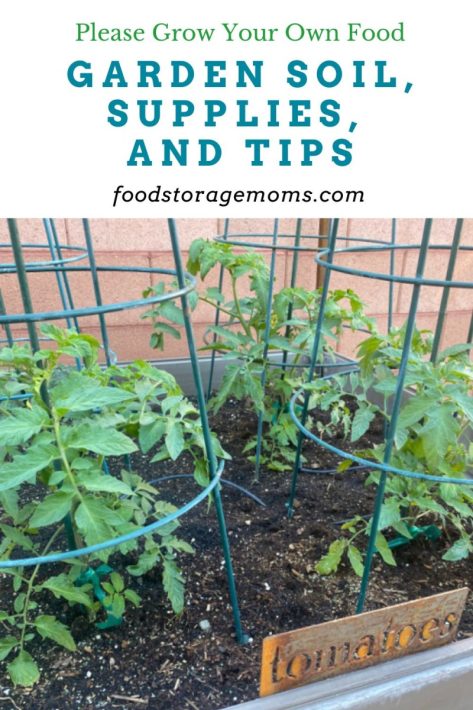
Documentary I Recommend
If you haven’t watched the documentary “Poisoned: The Dirty Truth About Your Food” on Netflix and it may be streaming somewhere else, please do so. We must plant a small garden if that’s all we have room for. You can do it!
As you know, we moved up north in Utah, and the soil is better here, but the growing season is shorter than in Southern Utah. We must be ready to put our plants out by Mother’s Day; we shall see what the weather does this year. I need to decide what raised gardens I can afford and ask my grandsons to help fill them with good organic soil.
I decided I had to make a plan for my backyard so I could live off my land or at least try to live off my small plot of soil. I have had a garden for over 52 years, so I have learned the good, the bad, and whatever else about a garden. Today, I want you to consider growing a garden if you haven’t already done so. Let’s get the process started. Where I buy my garden seeds: SeedsNow
Garden Soil, Supplies, and Tips
1. Soil
The first thing we need to consider is our soil’s general condition and the perfect spot to grow fruits and vegetables. First, we need a lot of sunshine, so look for a great place in your yard. If you take a shovel and can’t dig very deep, your tomato roots can’t grow deep into the soil either.
I quickly learned that this beautiful red clay soil, which people love to admire and explore by hiking and biking all over the mountains of Southern Utah, is not the best soil for growing many plant varieties, or at least without some additives.
People love using manure, but I don’t have farm animals or a truck, so that won’t work for me. I know my soil is “clay” that can dry out very hard and clod up, so it is not the greatest for roots to grow deep down in the earth.
When we bought that house about 19 years ago, I tried growing tomatoes in 20-by-20-inch pots. I used a water drip system and everything else I was told to use to be successful. It didn’t work; the heat is too extreme for clay pot tomatoes. So, I checked that off my list.
But I learned I could grow potatoes in those vast pots a few years ago. It was a cartwheel moment for me when I dug my first potato! I was thrilled as I dug potato after potato and placed them in my hod basket. You need to understand: I have grown potatoes in large yards before, but I had a tiny yard there, and it was a bit trickier, but it can be done!
I soon realized that unless I bought a tiller (we sold our tiller years ago), we would not be able to grow any food items I desired in this hard cement-like clay soil. No, I’m not buying a tiller. I bought Miracle Grow soil and filled some raised garden beds, and the change in my success rate was terrific. Here are the depths you need for certain vegetables based on quality soils:
Shallow-rooted vegetables
Shallow-rooted veggies, such as lettuce, radishes, cauliflower, onions, chives, potatoes, and herbs, require a 12—to 18-inch soil depth for the roots to grow healthy and strong.
Medium-rooted vegetables
Medium-rooted vegetables, such as beans, cantaloupe, summer squash, and cucumbers, require an 18- to 24-inch soil depth for their roots to grow healthy and strong.
Deep-rooted vegetables
Sweet potatoes, tomatoes, and rhubarb are deep-rooted vegetables that need 24 to 36 inches of soil depth to grow healthy and strong. I have succeeded with my raised garden boxes with a soil depth of only 18 inches. I have found that I need to spread them out so they don’t conflict.
Can you see why people have to till gardens to loosen and make the soil loamy soil? I use a shovel and a rake in my raised garden beds. I have had a garden for 50 years with great soil, so I had to learn how to grow stuff here in Southern Utah.
Check the pH level
A worthwhile soil quality test is to check the soil’s pH level. The soil needs to be moist, and the probe needs to be clean and shiny. If it gets rusty, you can polish the probe with steel wool. Please remember to test several sections in your garden. Place the probe into the moist soil or water runoff and check the numbers. You can modify your soil type to grow your desired veggies if you know your soil type. Easy peasy.
Some plants prefer acidic soil, while others prefer alkaline soil. You can amend the soil with a few tips. Here are a few ideas for amending your soil: sawdust from untreated wood, shredded newspaper without the glossy pages, coffee grinds (fresh), two-year-old manure that’s been composted, etc. Be careful with coffee grinds; I put too much in and had to buy calcium to counteract it.
These are the pH numbers you want:
1. pH 7 is neutral soil
2. pH below 7 is acidic
3. pH above 7 is alkaline soil
2. Raised Garden Beds
The backup plan to using regular yard soil was to try raised garden beds. I decided to start with 18-inch-deep raised garden beds. Generally speaking, tomatoes need 24 inches for prime growth, but as mentioned, mine have 18 inches of root space, and they have grown very well.
I started with four raised garden beds, each 4 feet by 4 feet and 18 inches deep. Then, the next year, I bought two more raised gardens. I now have seven raised gardens. I purchased two more for next spring since they were on sale, and the company seems to be coming up with a newer style next year.
Yes, they are pricey, and you have to buy soil to put in them. As I stated above, I only buy Miracle Grow soil. They are raised beds 4 feet by 4 feet by 18 inches deep, and it takes 10 two-cubic-foot bags to properly fill them.
Yes, it’s not as cheap as using the regular soil in your yard, but I know I can grow my food in less-than-optimum soil and weather conditions. I bought mine over several seasons, so it worked well and was within my garden budget.
3. Fertilize Your Garden
I only use Miracle Grow fertilizer, but I had seven raised garden beds. I will see what I can put this year in the available space. It’s minimal.
4. Buy Heirloom/Organic/Non-GMO Seeds
Here’s the deal: starting with quality seeds or plants can produce much more in your garden. If you want to remember the term heirloom seeds, think pioneer. These seeds have been around for years and years. You can save and use the seeds each growing season with healthy plants. They might even pop up next spring without saving seeds. This is where I buy seeds: SeedsNow
Ballard’s Nursery ( LaVerkin, Utah) gave me a list of seeds and information about them. As always, I am condensing the list. I like the nitty-gritty, not a lot of fluff, so to speak. Here is my condensed list of seed information, simplified from Ballard’s:
Open-pollinated Seeds:
These seeds are produced by allowing many plants to cross-pollinate freely for several generations. Only similar plants can contribute pollen and make seeds for the next generation. The offspring that do not conform to the desired traits are culled before they can contribute pollen. These are the best seeds!
Hybrid Seeds:
These seeds are produced by crossing two open-pollinated varieties. The parent types are generally highly inbred so that they will express their genetic traits uniformly. Hybrids tend to be more vigorous than open-pollinated varieties (hybrid vigor). You can save seeds from hybrid plants, but because the parent plants are no longer inbred, their offspring may display various genetic traits, and the resulting crop may not be uniform.
Storing Seeds:
If you keep your seeds dry and as cool as possible, you can use the same seed (in most cases) for several years. Put them in an airtight container in the refrigerator or other cool storage areas (40-50 degrees storage temperature is ideal). Vacuum packing or freezing your seeds is unnecessary for good storage results. When you are ready to use the seed, remove the container from storage and let it warm up before opening to minimize condensation on the inside of the container.
Long-Lived Seeds:
These may be expected to maintain good viability for 5 years or more. Beets, broccoli, Brussels sprouts, cauliflower, cabbage, collards, kohlrabi, chicory, endive, escarole, radicchio, cucumber, kale, lettuce, melons, mustard, peppers, radish, rutabaga, sunflower, tomato, and turnip are examples.
Medium-lived seeds:
Beans, carrots, celery, chard, corn, eggplant, parsley, peas, pumpkin, and squash are in this category and may be expected to maintain good viability for 3 years.
Short-lived seeds:
These are generally not recommended for use for more than one season, but if kept cool and dry, they will usually still be acceptable in the second year. Leek, onion, parsnip, spinach, and cilantro are examples you can try.
5. Epsom Salt Helps Your Garden Grow
Epsom salt is excellent for tomatoes and peppers because they are usually magnesium-deficient. When planting tomato or pepper plants, you use one tablespoon per hole. As the tomatoes or peppers grow, we need to add one tablespoon of Epsom Salt per foot and work it into the soil.
Roses are usually magnesium deficient, so use one tablespoon per gallon and spray them if you think they need some magnesium. Epsom salt is also excellent for some flowering shrubs, like evergreens, since it improves the flowering process. I even use it on my trees. I learned it from my weed/fertilizer guy.
I had one tree struggling, and I added Epsom salt. The tree is green and doing very well. The mixture solution for trees is two tablespoons per nine square feet of the root base. I do this every three to four months. I also water my trees for one hour every two weeks in the summer and only once a month in the winter. Here again, this is why it’s critical we know our soil. If we test our soil, we will know what our plants need.
Epsom salt contains magnesium and sulfur, two essential nutrients for plants. Magnesium is found in chlorophyll that turns sunshine into food for our plants.
Garden Soil Amendments:
Garden soil is just like us in many ways. We will grow stronger if we eat the right foods. Your garden needs fertilizer or soil amendments such as these:
- Azomite Micronized Bag, 44 lb
- Earthworm Castings Organic Fertilizer, 15-pound
- Organic Bone Meal, 3 lb
- Organic Vermiculite
Tomato Cages
Here is a picture of my raised garden beds and the tomato cages I purchased from Glover Nursery in South Jordan, Utah. I have had these for at least 15 years; they do not fall apart. They are the only ones I will buy. If you live near this nursery, I highly recommend this brand called “Sturdy Cages.”
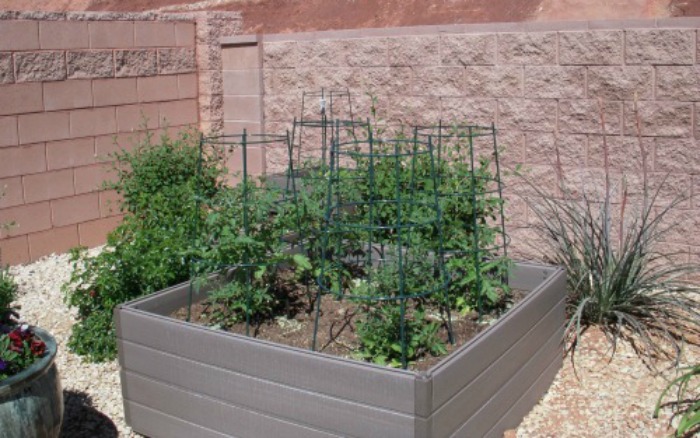
Tomato and Pepper Blossom End Rot (brown spot):
This disease is usually caused by too much water (overstressed) or too much nitrogen. Plants need calcium because they have a calcium deficiency.
Your tomato plants need calcium. You can buy a spray when the flowers first appear, or you can add crumbled eggshells deep into the soil to help with the calcium levels. Again, we need to check our pH levels.
Final Word
Please plant a garden; I feel an urgency to ensure people learn to produce their own food. If you have access to a community garden, that would be awesome. I’m lucky to have a small yard where I can produce enough vegetables for our family using the space in my backyard. Please be prepared for the unexpected. May God Bless this world, Linda
Copyright Images: Senior Woman Holding Garden Box Depositphotos_21909131_S By Gpointstudio,

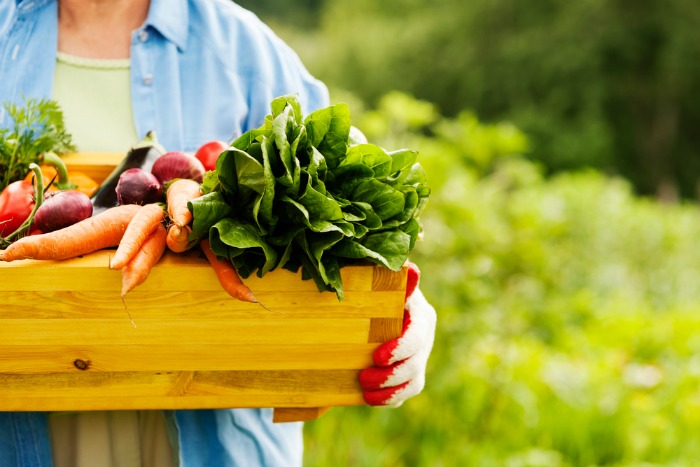

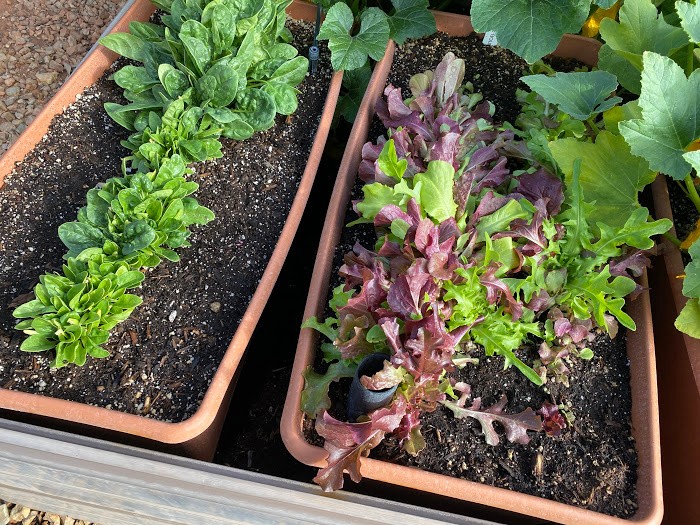
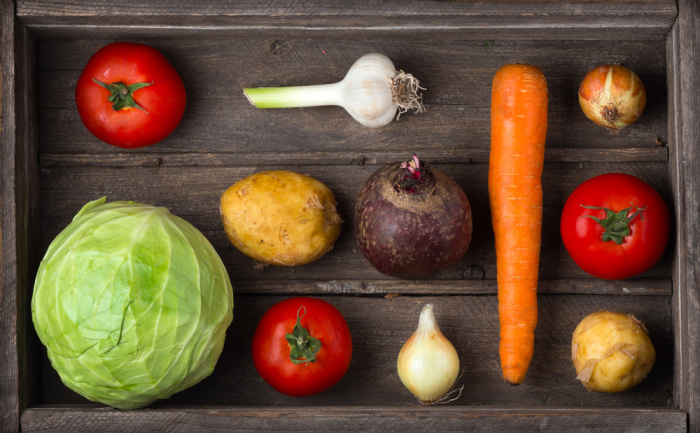
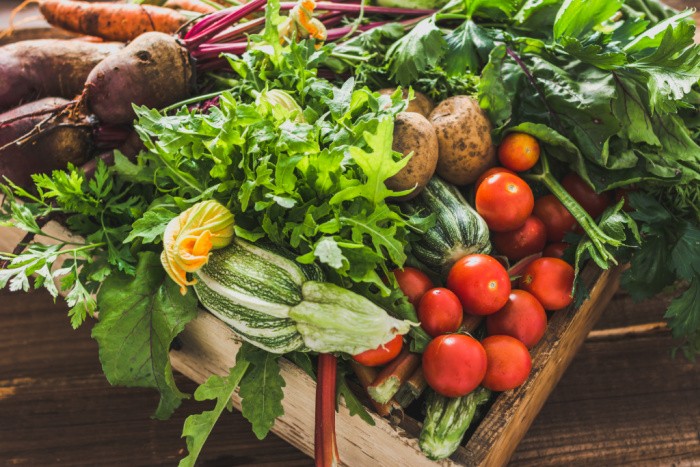
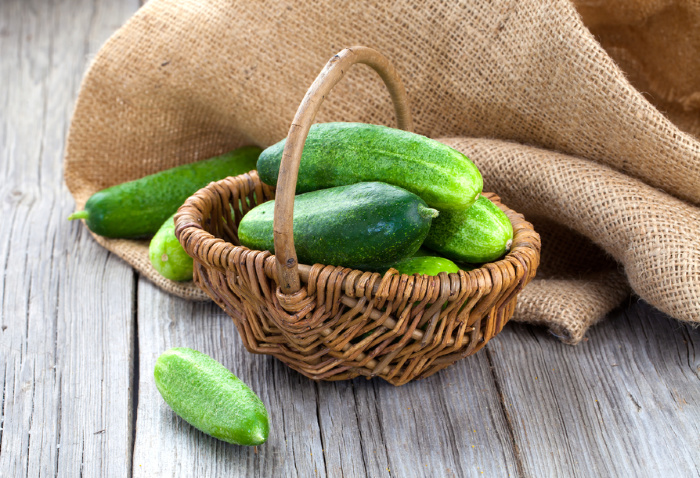
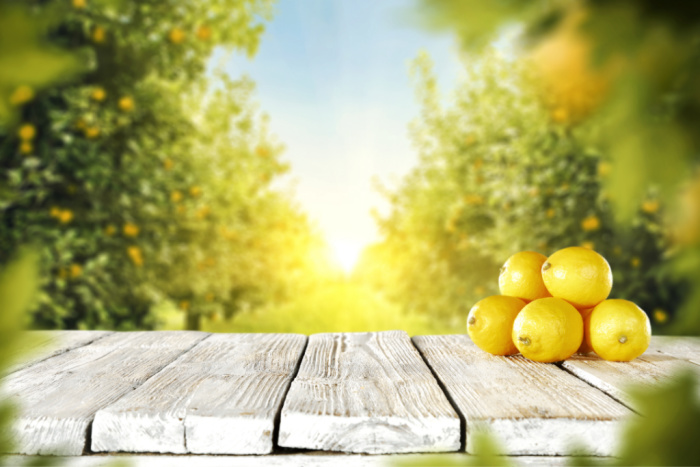
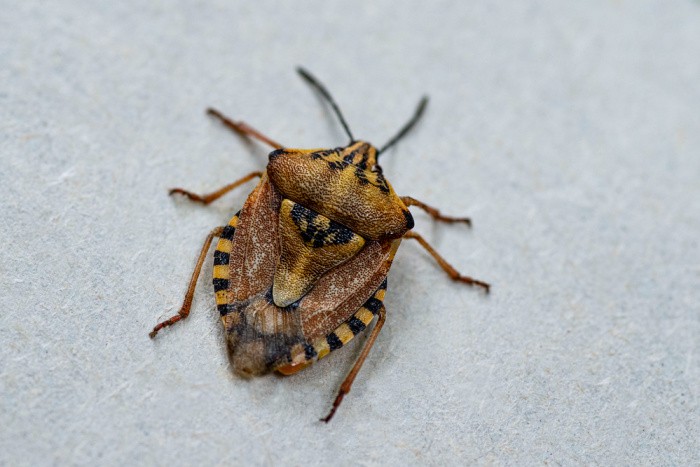










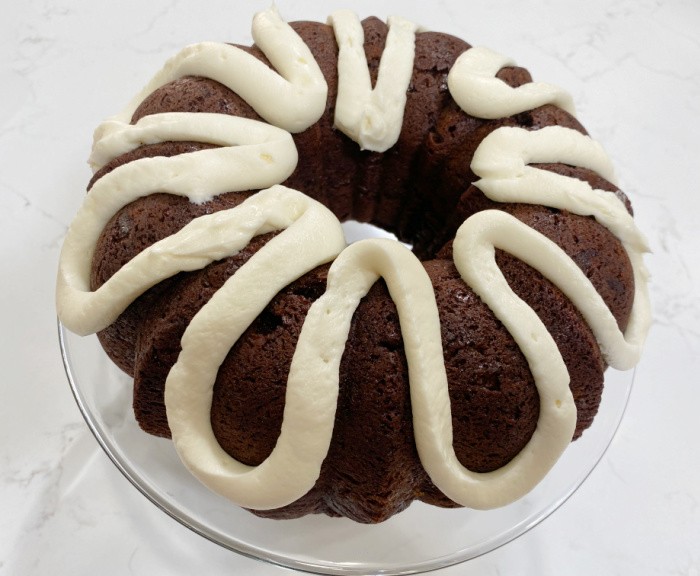
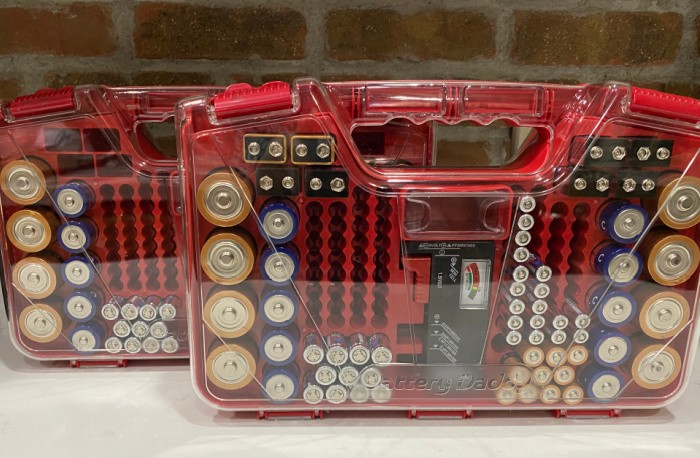

Linda ~ I wish I had a spot to grow a garden but I live in an apartment complex. I do have a balcony but it only gets good afternoon sun and even that is blocked by the balcony wall! I do grow some things in pots but many things don’t do well in pots. I have seen a number of ideas on Pinterest but I don’t have the room or the ability to hang things so some of the ideas are worthless to me. AND, growing in pots is a learning experience to say the least. I also use Miracle Grow potting soil in my pots.
A couple of years ago I planted a cherry tomato plant and made the “mistake” of using Epsom salt in the pot. Well, the “mistake” was that the plant took over EVERYTHING!! The plant was so huge that I thought I was going to have to purchase a chain saw to cut it down at the end of the season. I had so many tomatoes that people around me were starting to say NO to me when I asked if they wanted tomatoes!! I also planted some sage using Epsom salts too! I could not believe the size of the leaves!! They were huge.
So, this year, I am planning to grow a Roma tomato, some Italian herbs and make my own sauce. But that will probably be all that I can manage on my balcony.
Hi Leanne, oh my gosh, the chainsaw story!! I have the giggles! I love growing Roma tomatoes, they are meatier and great for salsa and sauces! Love your comment! Linda
My tomatoes were a fail last year, so I am going to take your Epsom salt advice. They were in self-watering buckets, but the heat is too brutal here as well. Thanks also for giving specific instructions–very helpful!
Hi Roxanne, I have had fails on zucchini, it happens. But I will not give up. Who can’t grow zucchini, right? Good grief. My tomatoes in the pots did not work. The pots got way too hot here in Southern Utah. It takes practice and the weather changes all the time. Keep prepping, Linda
Great article. Thanks for all the tips because I needed them!
However, I would like to point out that using miracle grow fertilizer and soil is defeating the purpose of using organic seeds and methods. Miracle grow is owned by Monsanto and cannot be trusted to be safe.
Hi Kandis, wow, I didn’t know Monsanto owned Miracle Grow, OUCH! Thanks for the tip! Linda
Linda, what a great article, full of sage advice. If you garden in the desert Dr. Q’s products are specifically designed for desert gardening. I like them. I make my own compost but, even with all the chicken manure I get, I don’t make enough to keep all my raised beds and large containers happy, so I supplement with Dr Q’s, Wormgold, Coconut coir or peat moss, cow manure, and, once in a while Miracle Gro (which I won’t be using anymore now that it’s owned by Monsanto). I also use a lot of additives as I note below.
I grow a lot of tomatoes in large, 24″ diameter, 24″ tall pots and they do quite well. They and my raised beds are watered by drip or soaker hose irrigation. I am in the process of raising the sides of my raised beds to increase their depth to at least 24″. Better for the plants and better for the worms. I use small bark chips at mulch and over the years they break down and improve my soils. My two compost heaps provide enough to add to only one or two of my beds per year. It just takes forever to make compost in the desert (mostly my fault since I don’t water them enough). Since I grow food year round (the sole advantage to desert gardening) I use epsom salts, Azomite, blood meal, bone meal, sulphur and other additives because my garden soils never get a rest.
This year I am growing Clancy potatoes from seed. The seeds have been started in my inside mini-greenhouse and will be transplanted outside as soon as they get big enough (4″ tall). Tomatoes, squash and melons are sharing that mini-greenhouse too.
During the course of our winter growing season I normally replant lettuce and spinach at least twice, Boc Choi at least three times. I only need to plant chard once as one or two plants provide all the leaves I need for cooking and salads. Cabbage only gets planted once. Same for snow peas and shell peas. I also am growing celery, but it isn’t doing well. Broccoli is often planted only once, but this year I’ve done a second planting.
Thank God my chickens have started laying again. I recommend getting chickens and producing your own eggs to everyone with a yard.
Hi Ray, I agree Miracle Grow fertilizer is owned my Monsanto and it bugs me but I love the stuff. I have never heard of Clancy potatoes i will check those out! One day I will I could drive down and meet you and see your garden, It won’t happen but it would sure be fun to see how your garden grows! When and IF I can have space for a garden I will be talking to you, you’re the best! Linda
Leanne, even in an apartment you can grow sprouts for your salads, sandwiches and stir frys. I grow a mix of alfalfa, broccoli and clover pretty much constantly. All you need is a few mason jars, some cheesecloth, and a place that’s out of the sun. Mine grow on my kitchen countertop. I rinse and drain them twice a day and only set them on a window sill when I want them to green up a day before using them. They grow so fast I end up restarting new seeds about every four days.
Hi Ray, great tips on sprouts! Linda
Don’t know if they have them in your area but we have regular Seedy Saturdays here where people sell or swap seeds collected in their own gardens that are locally adapted. Our local library also has a seed library that you can take from and return some of your own seeds later. There are workshops on how to save your own seeds. Sometimes people pot up and bring in plants they’ve divided as well as seeds. There’s usually a few free plants if you get there early enough. I started a garden from scratch on poor soil, using galvanised metal raised beds. They were expensive but won’t need replacing like wooden ones. I put a lot of small pruning and other plant debris in the bottom to help fill and bought good soil to put on top. I grow my potatoes in bags then add the soil to the raised beds afterwards. Next up is setting up a drip irrigation system and installing a 2000 gallon rainwater collection tank since our area is now drought prone in summer and we aren’t allowed to use the local potable water system for gardening. Our recycling centre does reasonably priced backhauls of garden soil when they go off island to deliver the weekly recycling. There is a lot of animal manure available locally and most people compost as well since organics are not allowed in the garbage. In winter I grow hydroponic greens and this year a couple of tomato plants as well. Probably won’t do indoor tomatoes again but they sure are tasty compared to the store ones.
Hi Alice, I want to grow tomatoes indoors but I was wondering if it would work, I trust your experience. I can grow them in my hydroponics but it will not grow very many tomatoes. I need to figure out how to get my garden going. I love hearing about your neighborhood where they exchange plants, seeds, etc. You are blessed, my sweet friend. I would love a 2000 gallon rainwater collection tank, love it!! Linda
Hi Linda, may I suggest, buying or making some of those bed set ups geared for people who can’t or won’t kneel anymore. Check them for good drainage. They work for short to medium rooted plants. You show in an above photo of a nice (I’ll use plastic, since I’m not sure what they are made of) raised beds that look to be 18-24 inches deep. With open bottoms you can open and fluff the soil underneath for better drainage and extremely deep roots. Some people buy cattle troughs and remove the bottoms.
As for soil, in raised beds, I use Espoma Organic potting soil. It’s a rich mixture of different organic composts that is rich,and ph neutral, but doesn’t compact any where near as much as the cheaper garden soil does. For myself I mix in a generous amount of perlite. It helps to balance the drainage and stay loosened.
For compost, be careful, towns compost Christmas trees, and plant waste bags. That means it is not organic, there may be pesticides, heavy metal, some sneak cat litter into it, you just don’t know what is in it. Towns and cities sell it cheap as compost, but it’s not safe. So seek out organic composts in your area. For fertilizer I’ve used Espoma Organic liquid fertilizers, and the Organic Plantone series, especially Organic Tomato Tone. I get them now through Amazon, but I used to get them at a garden center. have 2 lines organic and not organic, so definitely get the right one. I recommend a book, Mel Bartholomew’s Square Root Gardening. It can be used for raised bed gardening for maximum output.
HI MaryAnn, thank you for the heads up on my response!! I love perlite it keeps my garden from drying out in the heat. I won’t use the city compost, you are so right, we don’t know in it. It may be free or cheap but you get what you pay for. I think I have the Mel Bartholomew’s square foot gardening. I am writing down the products you use, I hope to be able to do a garden this year. We share the lot with my daughter, so not sure what’s going to happen. Linda
Linda, I know how hard it is to do any traveling with your health but you would be welcome any time.
If I can figure out how to do it I’ll take some pics and email them to you.
Hi Ray, I sent you an email. Linda
Hi Linda, got that email. You said you shared the yard with your daughter. Would they be interested in going together with you? I once did that with a coworker
for shared vegetables. If your son will be doing the heavy work, it might be worth it, for mutual results? Just thinking. It’s also how Steve and I worked before and after we married. I did teach everything I know about gardening, he’d never done it before.
Hi Mary Ann, yes, I hope we can have a garden, they have never really grown much. They have grown tomatoes and pumpkins as I remember. We shall see, Linda